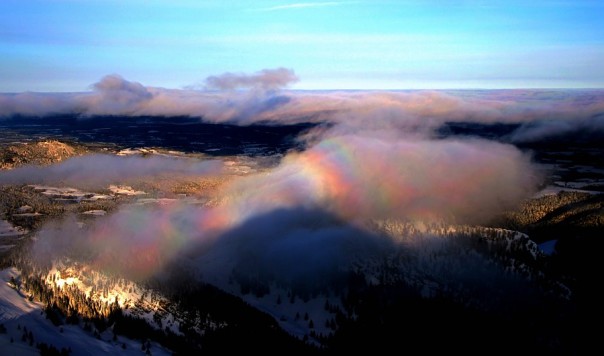Blog Archives
Gloridescent clouds
As “Gloridescence” I define colored clouds in the antisolar area, where there is no visible connection to a glory.
The first observation of colored clouds at the antisolar point was made by Stefan Rubach on Mt. Großer Arber at Jan. 26, 2007. We suspected fragments of a glory, but we were not sure.
On Nov. 18, 2007, I made the first observation of my own and on Mar. 1, 2010 my second observation at Mt. Wendelstein (1835m).
- Nov. 18, 2007-Wendelstein
- Nov. 18, 2007-Wendelstein
- Nov. 18, 2007-Wendelstein
- Nov. 18, 2007-Wendelstein
- Mar. 1, 2010-Wendelstein
At Mt. Zugspitze (2963m) I observed these colored clouds a few times and named them „gloridescent clouds“ (and so far no one ever challenged this name).
On Apr. 25, 2015 I made my first observation of „gloridescent clouds“ at Mt. Fichtelberg (1215m). Meanwhile we received more observations, one from the valley of Neckar river, one photo by Eva Beatrix Bora from Stavanger, Norway and some from an aircraft (1 – 2). From these we conclude that:
- Just as glories become more frequent with increasing observing levels (see this article), the frequency of “Gloridescence” also increases.
- At lower altitudes (i.e. in the area of low clouds), “Gloridescence” originates mainly from underneath of stratocumulus clouds.
- At higher mountains (e.g. Zugspitze, 2963m) and on airplanes, “gloridescent clouds” are more frequent and appear mainly in deeper cloud layers or single shreds of clouds.
Author: Claudia Hinz, Schwarzenberg, Germany
















